
This page last revised 31 August 2006 -- S.M.Gon III
Introduction
Ecoregion
Conservation Targets
Viability
Goals
Portfolio
TNC Action Sites
Threats
Strategies
▫
Tables
Maps & Figures
CPT Database
Appendices
Glossary
Sources
.
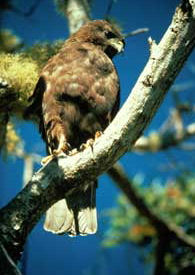
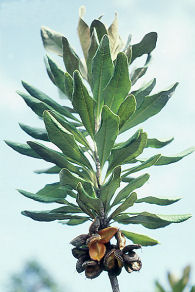
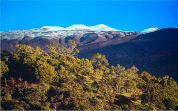
Mesic and dry ecological systems are best developed on the Island of Hawai'i.
Montane Mesic System
Natural communities between 1,000and 2,000 m (ca 3,000 - 6,000 ft) elevation, receiving between 50 and75 inches annual precipitation, or otherwise bearing prevailingly mesicsubstrate conditions comprise the montane mesic system in theHawaiian High Islands Ecoregion. This system is found on theislands of Hawai‘i, Maui, Moloka‘i, and Kaua‘i, andis best developed on the leeward side of the islands, for example, thesouth slope of Haleakalā, the Kona flank of Hawai‘i, and the westslopes of Kaua‘i. It typically lies just below the subalpine system and montane dry system, and above the montane wet system.There are a number of naturalcommunities described within this system, including a variety ofgrasslands, shrublands, and forests. Biologicaldiversity is moderate in this system, relative to lower elevationsystems, but specialized plants and animals occur there, such as ‘io, the Hawaiian hawk (Buteo solitarius) and hō‘awa (Pittosporum hosmeri). This system is important habitat for the forest bird concentration.
Natural communities and species of this system are listed among nested targets via the appendices.

Maps depicting the distribution of the Montane Mesic System in the Hawaiian High Island Ecoregion are presented below:
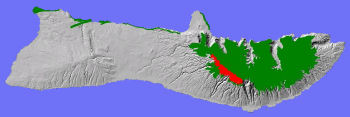
The Montane MesicSystem on Moloka'i Island (red area above) occurs in a restrictedband below the montane wet summit area, on the leeward (southwest)slope of the East Moloka'i volcano.
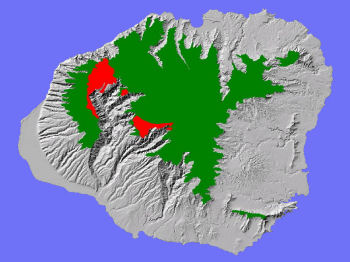
The Montane Mesic System on Kaua'i Island (red areas above) occurs along the leeward (western) slopes below themontane wet summit area.

Natural communities and species of this system are listed among nested targets via the appendices.

Maps depicting the distribution of the Montane Mesic System in the Hawaiian High Island Ecoregion are presented below:

The Montane MesicSystem on Moloka'i Island (red area above) occurs in a restrictedband below the montane wet summit area, on the leeward (southwest)slope of the East Moloka'i volcano.

The Montane Mesic System on Kaua'i Island (red areas above) occurs along the leeward (western) slopes below themontane wet summit area.
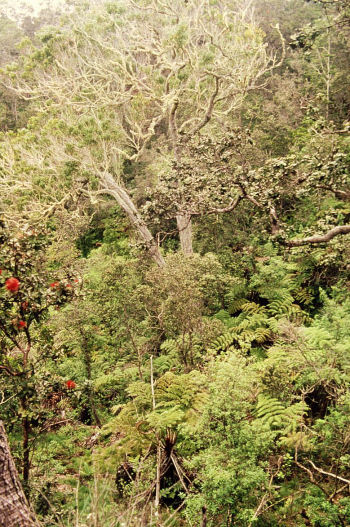
The Montane Mesic System in Hawai‘i includes rich forest communities
such as this example in Manukā Natural Area Reserve, Hawai'i Island.
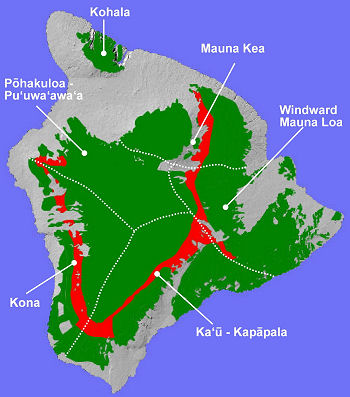
The Montane Mesic System on Hawai‘i Island (red areas above) occurs in five conservation areas (Mauna Kea, Windward Mauna Loa, Ka‘ū-Kapāpala, Kona, and Pōhakuloa-Pu‘u Wa‘awa‘a).
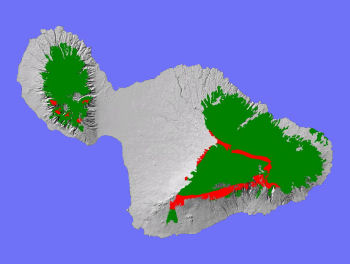
TheMontane Mesic System on Maui (red areas above) occursin the East Maui conservation area (right) in a relatively narrow zone below the subalpine system, andon a few high peaks in the leeward (southern) half of the West Maui conservation area (left).

